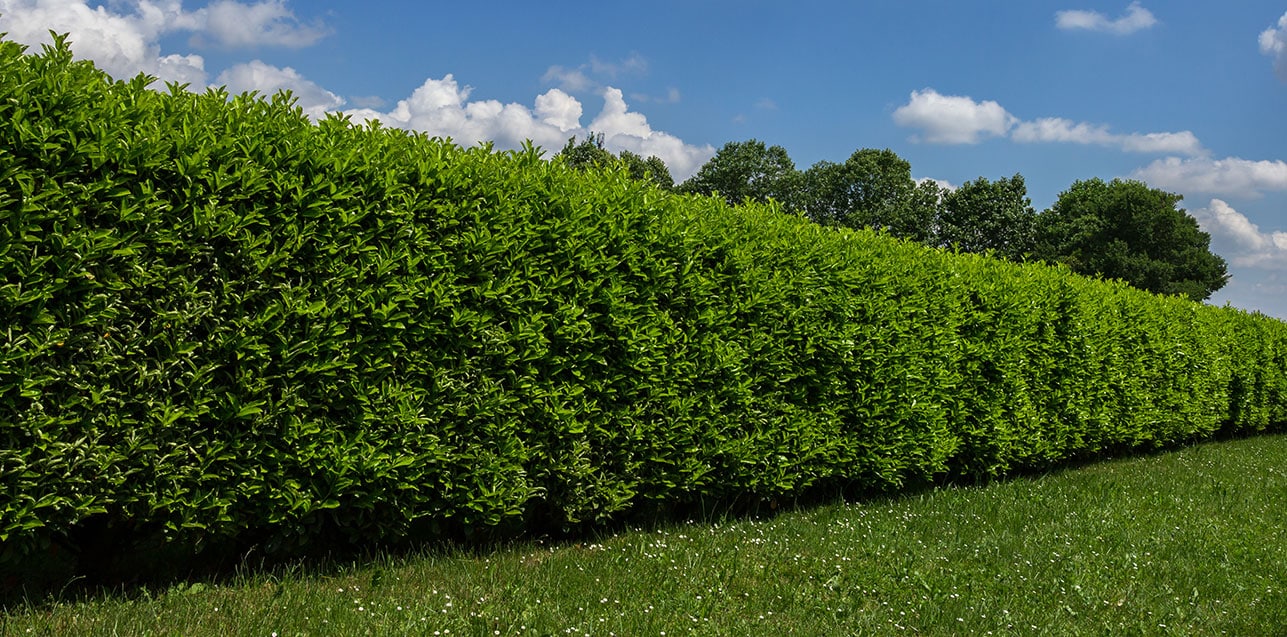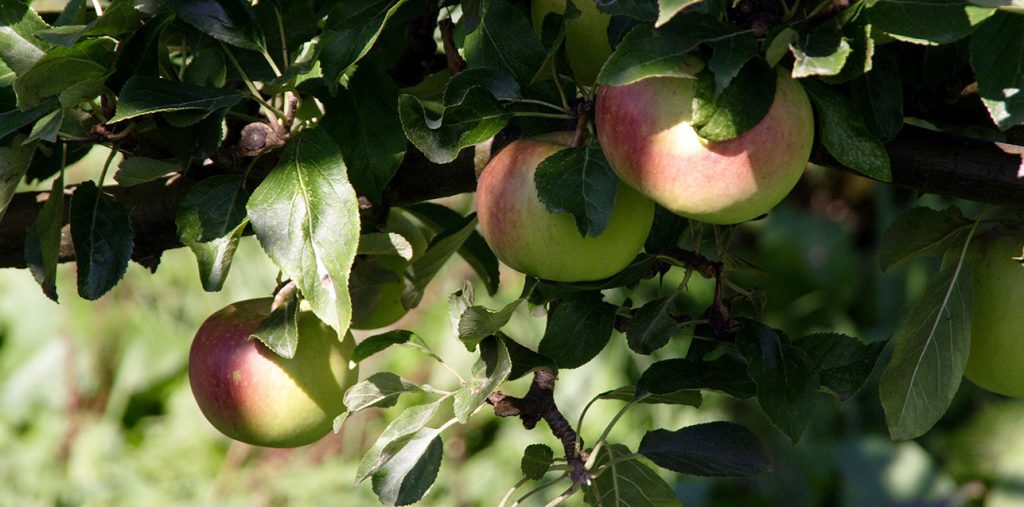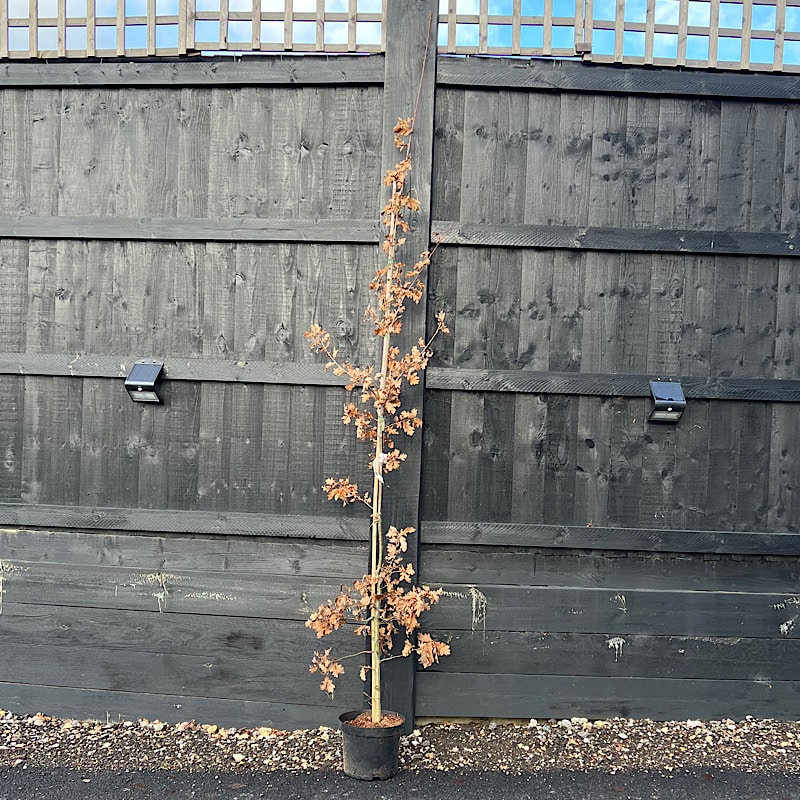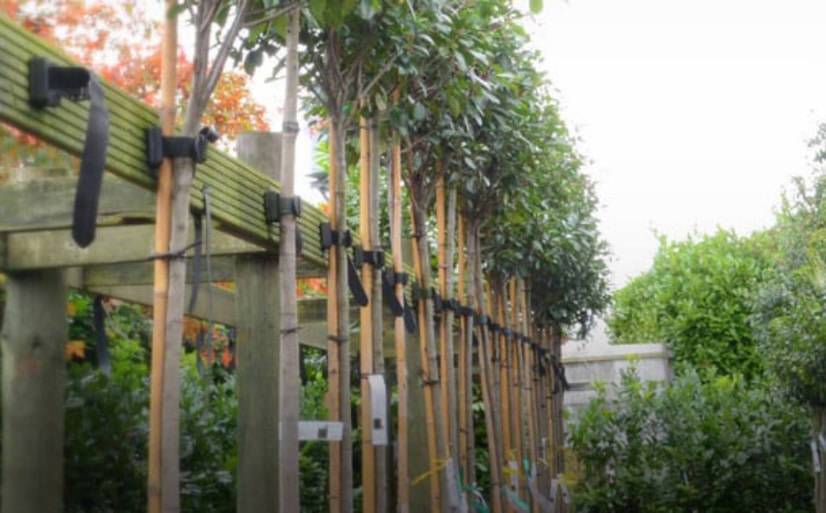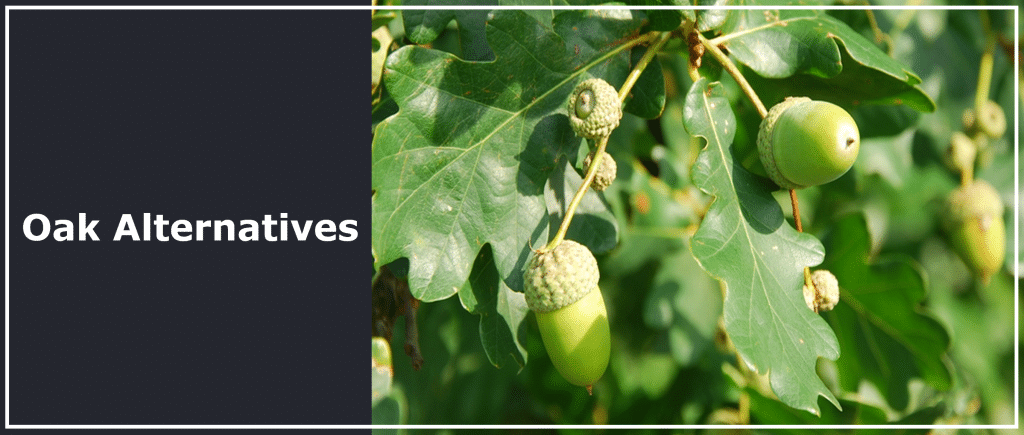
As you may know, Oak Processionary Moth (OPM) has become established in much of Greater London and surrounding areas. To minimise the spread of OPM and protect the UK from further infestations, strict restrictions on the movement of Oak plants have been introduced. Due to our nursery’s location within the OPM management buffer zone, we are not currently stocking oak trees with a girth over 8-10 cm. Many customers have asked about suitable Oak tree alternatives, so we’ve compiled a list of options below…
Please note that we do have a limited supply of smaller English oak trees (1.75-2m tall) in stock. However, these can take several weeks to replenish once sold out. To ensure you have alternatives when our English oak is unavailable, we recommend reviewing the following list.
Oak Tree Alternatives (Deciduous)
Silver birch. This medium-sized native tree is known for its striking white bark. As it matures, the bark at the base forms dark, rugged cracks. Its elegant shape features upright branches that gently weep at the tips. In spring, it produces light green, diamond-shaped leaves and brown-yellow catkins. The leaves turn a vibrant yellow in autumn. Silver birch can grow up to 20 metres tall. It’s a great choice for gardens, verges, parks, and urban spaces.
Rowan. Sorbus aucuparia is a tough and adaptable native tree. It grows well in many conditions, including urban areas and poor soils. This fast-growing tree starts with an upright shape. As it matures, it forms a rounded canopy and reaches about 10 meters tall. In late spring, it produces clusters of small white flowers. These are followed by bright orange-red berries that feed migrating birds in winter. Its green, pinnate leaves have serrated edges. In autumn, they turn a striking yellow to orange-red before falling. Sorbus aucuparia is perfect for gardens, parks, and woodlands. It offers beautiful seasonal interest all year round.
Small-leaved lime. Tilia cordata suits larger gardens, parks and woodlands well. Its rounded leaves have dark green tops and grey undersides. This tree also produces fragrant yellow to white flowers that attract bees and insects. It tolerates air pollution well and responds nicely to clipping. This makes it a flexible choice for many landscapes. Like Oak, it is native to the UK and thrives in countryside settings. Its pollution tolerance also helps it do well in urban areas.
Semi-evergreen Alternatives
Hornbeam. Carpinus betulus is a popular and versatile native tree in the UK. Its dense form makes it ideal for structure, screening, and hedging. It also works well as a specimen tree. Hornbeam grows well on many soil types, including clay. It has bright green, oval-shaped leaves that turn rich orange-brown in autumn. These leaves often stay on the tree through winter, adding year-round interest.
Green beech. Fagus sylvatica is a large, striking tree with a broad, spreading canopy. Its new leaves appear silky and bright green, then deepen to a glossy dark green. In autumn, the foliage turns vivid shades of yellow, orange, and brown. Many leaves stay on the branches through winter, offering screening and structure. Beech prefers well-drained soil. For clay-based ground, we recommend choosing Hornbeam instead.
Both Hornbeam and Beech often keep their dried, brown leaves through winter until new green leaves appear in spring. While the leaves remain, they provide privacy and screening during the colder months. Please note that harsh wind or cold can cause the leaves to drop!
Hopefully this helped to highlight some of our favourite Oak tree alternatives. Please contact us if you have any questions, our knowledgeable staff are always on hand to answer any questions you may have. Remember you can always visit the nursery to pick your own trees!
Read More:
1. Tree Care Tips: How to plant, water and maintain your trees
2. Pleached Photinia Red Robin: A Stunning Screening Solution
3. What trees are best for new build gardens?


